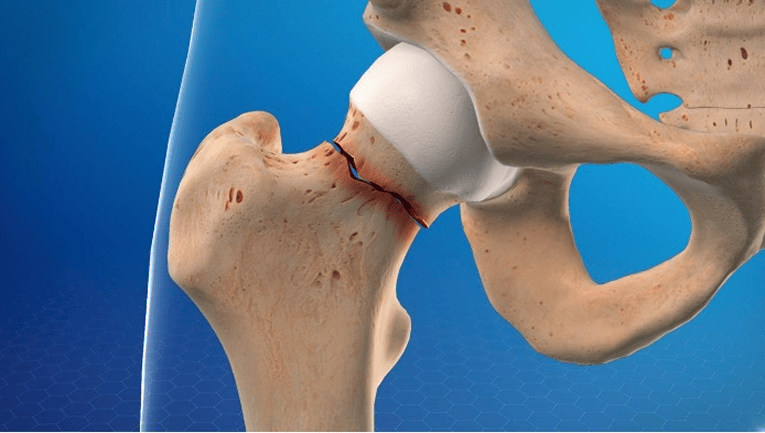Fractures are among the most common orthopedic injuries, requiring prompt medical intervention to ensure proper healing and restore function. Fracture fixation is a medical procedure used to stabilize broken bones, allowing them to heal correctly. Depending on the severity and location of the fracture, doctors use different fixation methods, including internal fixation and external fixation.
This article explores the various types of fracture fixation, surgical procedures, and recovery tips to help patients understand what to expect during and after treatment.
What is Fracture Fixation?
Fracture fixation
Fracture fixation is a surgical or non-surgical procedure used to hold broken bones in place while they heal. The goal is to ensure that the bones align correctly, allowing them to heal properly and restore full function. This process can involve plates, screws, rods, or external frames to stabilize the fracture.
There are two primary types of fracture fixation:
Internal Fixation – Surgical implants like plates, screws, or rods are placed inside the body to support the bone.
External Fixation – A stabilizing structure is attached externally to keep the bone aligned during healing.
Types of Fracture Fixation
1. Internal Fixation for Fractures
Internal fixation is a surgical procedure where metal devices are used to secure the bone fragments. This method is commonly used for complex fractures that require long-term stability.
Common Internal Fixation Methods:
Plates and Screws: Metal plates and screws are attached to the bone to keep it in position.
Intramedullary Rods and Nails: Metal rods are inserted into the bone’s hollow center to provide internal support.
Wires and Pins: Often used for small fractures or delicate bone structures, such as fingers and toes.
Advantages of Internal Fixation: Provides strong and stable support for the bone.
Allows early mobility and faster recovery.
Reduces the risk of malalignment and improper healing.
2. External Fixation for Fractures
External fixation involves placing a metal frame outside the body to stabilize the broken bone. This method is usually used for severe or open fractures where internal fixation is not immediately possible.
Common External Fixation Devices:
– External Frames: Metal bars and screws are attached externally to hold the bone in place.
– Ring Fixators: Circular frames used for complex fractures, such as limb lengthening or severe bone injuries.
Advantages of External Fixation Less invasive than internal fixation.
– Helps in managing soft tissue injuries Alongside the fracture.
– Allows gradual bone alignment and healing.
Surgical Procedure for Fracture Fixation
Step-by-Step Process:
Diagnosis and Imaging: X-rays, CT scans, or MRIs are performed to assess the fracture.
Anesthesia Administration: The patient is given either general or local anesthesia.
Surgical Incision: A small incision is made to access the fractured bone.
Placement of Fixation Device: Screws, plates, or rods are placed internally or externally.
Wound Closure and Dressing: The incision is stitched, and a protective dressing is applied.
Post-Surgery Monitoring: The patient is observed for pain management and initial recovery.
fracture fixation
Recovery Process After Fracture Fixation
Recovery after fracture fixation depends on factors like age, type of fracture, and overall health. Generally, it takes 6 to 12 weeks for bones to heal, but rehabilitation may extend further.
Recovery Tips:
Follow Doctor’s Instructions: Attend follow-up visits and adhere to prescribed medications.
Physical Therapy: Helps restore strength and mobility in the affected area.
Proper Nutrition: A diet rich in calcium and vitamin D supports bone healing.
Avoid Weight-Bearing Activities: Using crutches or braces may be necessary until healing progresses.
Monitor for Complications: Watch for signs of infection, swelling, or severe pain.
Complications of Fracture Fixation
While fracture fixation is highly effective, some risks and complications may arise, including:
1. Infection at the surgical site.
2. Delayed or improper bone healing.
3. Blood clot formation.
4. Nerve damage due to surgery.
5. Implant failure or loosening.
If any of these symptoms occur, patients should contact their doctor immediately.
Consult Dr. Ashish Jain for Expert Fracture Fixation Treatment
For those seeking expert orthopedic care, Dr. Ashish Jain is a highly experienced specialist in Robotic Joint Replacements and Orthopedic Surgery. As Senior Director of Robotic Joint Replacements & Orthopaedics, Dr. Jain specializes in treating fractures with advanced techniques to ensure the best possible recovery.
Dr. Jain and his team provide personalized treatment plans to help patients recover effectively from fractures and other orthopedic conditions. If you or a loved one needs fracture fixation, book a consultation today.
Conclusion
Fracture fixation plays a vital role in ensuring broken bones heal properly and regain full function. Whether using internal fixation with plates and screws or external fixation with frames, choosing the right treatment method is crucial for effective recovery.
For those undergoing fracture fixation, following a rehabilitation plan, maintaining a healthy lifestyle, and adhering to medical advice can significantly enhance the healing process.
If you or a loved one requires fracture fixation, consult Dr. Ashish Jain to determine the best treatment approach for a smooth recovery.

